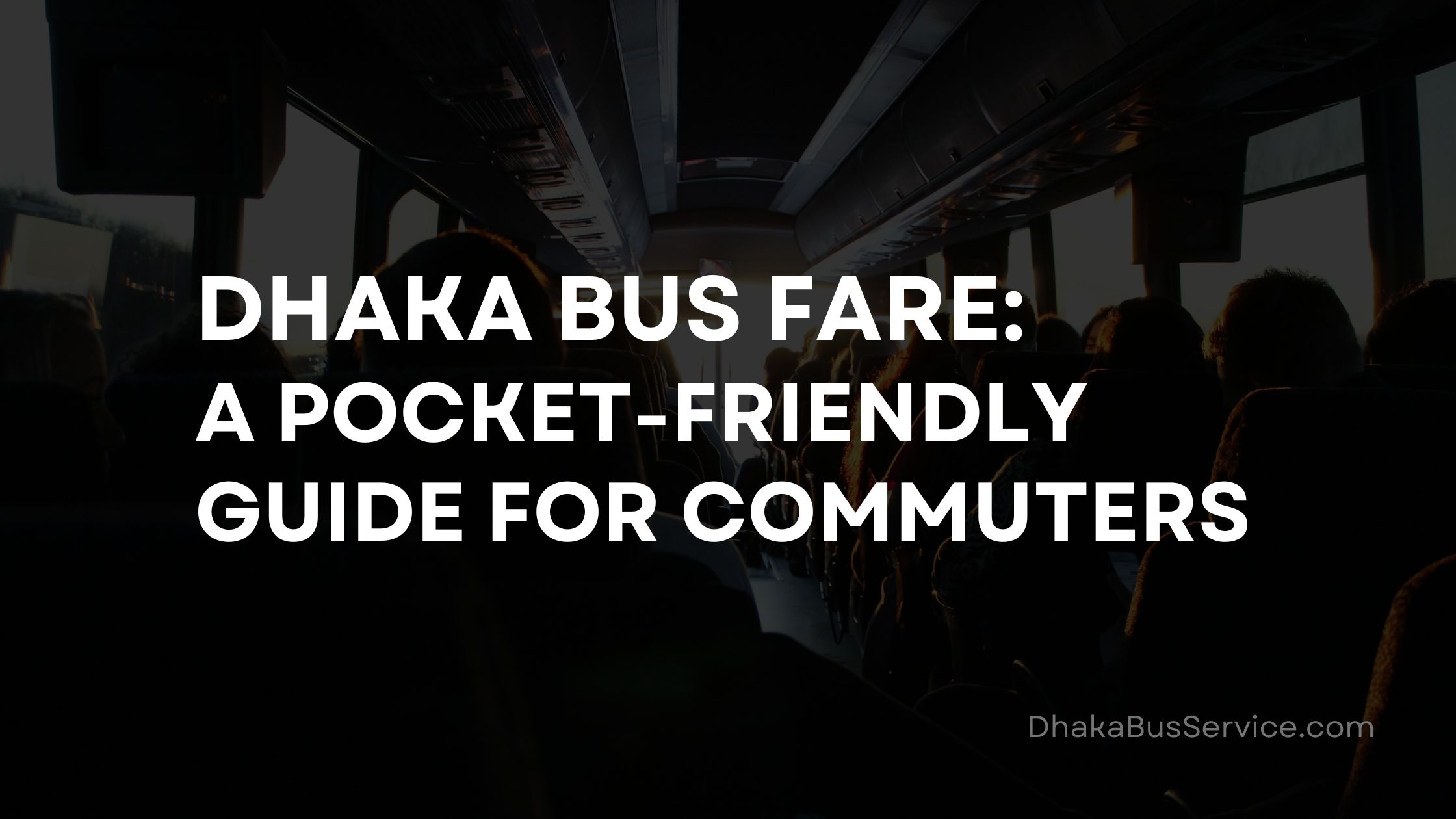
Dhaka Bus Fare: A Pocket-Friendly Guide for Commuters
17 Jul 2024Dhaka, the vibrant capital of Bangladesh, is a city where millions of people depend on buses to travel daily. With busy roads and rising expenses, understanding the bus fare system is key for any commuter trying to save money and time.
Government Buses: The Budget Option
Government-run buses, commonly known as BRTC buses, are the most affordable choice for commuters. The fares start as low as BDT 10, increasing based on the distance covered. Since these buses are regulated by the government, passengers can trust that pricing remains fair and consistent.
Private Buses: More Choices for Every Budget
Private buses in Dhaka provide a wide range of services, from basic to deluxe options. Fares on these buses vary according to the type of service and distance travelled. For a local trip, expect to pay around BDT 12, but fares can go up to BDT 50 or more for longer distances or premium, air-conditioned services. The flexibility in choices allows passengers to select what suits their needs and comfort.
Recent Fare Hikes: Feeling the Pressure
Bus fares have seen increases over the past few years due to rising fuel costs, putting pressure on the everyday commuter. However, the government has stepped in to provide some relief, introducing discounted fares for students and senior citizens, ensuring that vulnerable groups aren’t too burdened by these hikes.
Factors Influencing Bus Fares
Several key factors affect bus fares in Dhaka:
# Fuel Prices: When fuel costs go up, bus fares also rise to compensate.
# Inflation: Higher costs of living and maintenance directly impact bus company operations, leading to fare increases.
# Government Regulations: The government plays an active role in setting and monitoring bus fares to maintain fairness.
# Type of Service: Basic buses are cheaper, while deluxe buses with air-conditioning or other amenities charge higher fares.
Buses vs. Other Transport: A Cost Comparison
Despite fare hikes, buses remain the most economical choice when compared to other modes of transport like taxis, ride-sharing services, or rickshaws. For instance, a 10 km journey using a ride-sharing app could cost anywhere between BDT 150-200, while the same distance on a bus might only cost BDT 20-30. For those watching their budget, buses are the clear winner in terms of savings.
Challenges Faced by Bus Commuters
While buses are affordable, they do come with their set of challenges. Overcrowding is a common issue, especially during peak hours, and inconsistent schedules can make travel planning difficult. Traffic congestion is another significant problem, often causing delays. Fare hikes, though necessary, also hit low-income commuters the hardest, stretching already tight budgets.
What the Future Holds for Bus Fares
As Dhaka’s population continues to grow, there is hope for improvements in the public bus system. Modern buses with better facilities, e-ticketing systems, and more efficient infrastructure could become a reality. These advancements could make bus travel more convenient, efficient, and hopefully keep fare prices stable.
Conclusion
Understanding the bus fare system in Dhaka is essential for anyone who regularly travels across the city. Although recent fare hikes have affected many commuters, buses remain one of the **most cost-effective** transportation options compared to alternatives like taxis or ride-sharing apps. By being mindful of the factors influencing fares and staying informed about the latest updates, you can navigate Dhaka’s busy streets without stretching your budget.
This article is designed to offer helpful insights to daily commuters and visitors alike, ensuring you make the most out of Dhaka’s public transportation while keeping your travel costs in check.